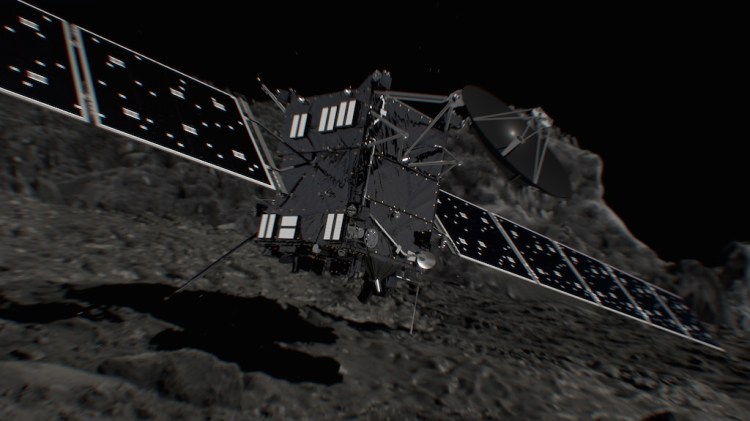Want smarter insights in your inbox? Sign up for our weekly newsletters to get only what matters to enterprise AI, data, and security leaders. Subscribe Now
Sometime around 1:20 p.m. CET on Friday, Rosetta will officially end its 12-year mission when the European Space Agency crash-lands the probe onto the surface of the comet it has been exploring.
The mission has been history-making, a thrilling achievement of science and engineering. The probe was launched in March 2004 to track down and study Comet 67P/Churyumov-Gerasimenk. In November 2014, Rosetta dropped its Philae lander onto the comet’s surface, marking the first man-made probe to land on a comet’s surface.
Philae transmitted about two weeks of data before falling silent. But Rosetta has continued to follow the comet and study it. Scientists hope that the data from the mission will help unlock secrets about the origin of the universe.
Now, ESA is preparing to bring Rosetta down for a controlled crash-landing on the comet’s surface to mark the end of the mission.
You can follow the action over the next couple of days here:
On Thursday, at 2:30 p.m. CET, a three-hour series of scientific talks celebrating the mission will be livestreamed on the ESA channel.
Late Thursday night, ESA will execute the maneuvers that will send Rosetta heading toward its fate on the comet. At that time, there could likely be updates to the final timing of the landing. The actual landing time is expected to be confirmed around 10 a.m. CET on Friday.
The final coverage of the descent is currently estimated to begin around 12:30 p.m. CET on Friday on the livestream channel. Times, of course, are subject to change.
To stay updated, you can follow the ESA on Twitter or Facebook. The Rosetta Mission also has a Twitter account. Finally, you can check the mission page for updates and photos.


